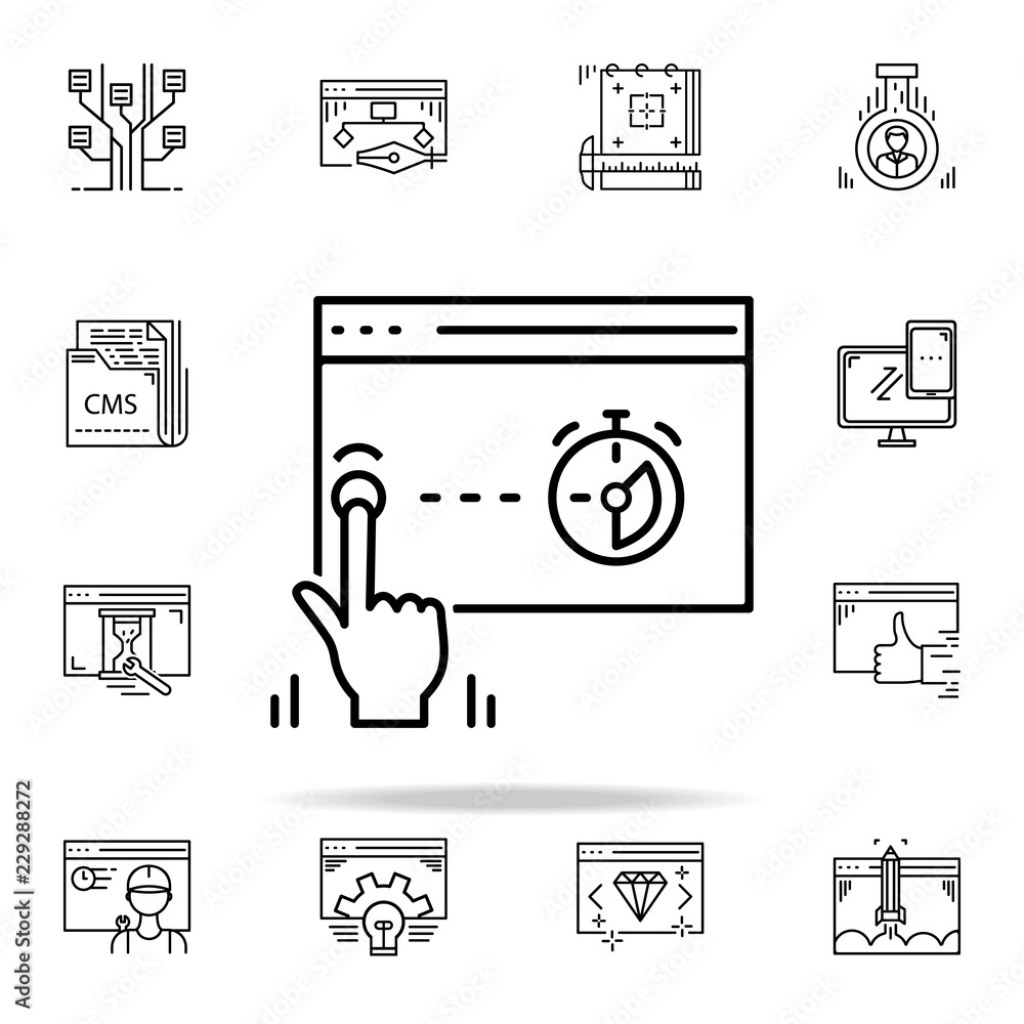Enhance Your Web Development With Powerful Unit Testing: Get Started Now!
Web Development Unit Testing: Ensuring Quality and Efficiency
Introduction
Dear Readers,
3 Picture Gallery: Enhance Your Web Development With Powerful Unit Testing: Get Started Now!



Welcome to our comprehensive guide on web development unit testing. In today’s digital landscape, where websites and applications play a crucial role in businesses and user experience, it is essential to ensure the quality, performance, and efficiency of these digital products. Unit testing is a fundamental practice in web development that helps developers identify and fix bugs, increase code coverage, and enhance overall product reliability.

Image Source: endpointdev.com
In this article, we will delve into the world of web development unit testing, exploring what it is, who benefits from it, when to implement it, where it fits in the development process, why it is essential, and how to effectively carry out unit tests. We will also discuss the advantages and disadvantages of unit testing and address frequently asked questions to provide you with a comprehensive understanding of this crucial aspect of web development.
So, without further ado, let’s dive into the exciting world of web development unit testing!
What is Web Development Unit Testing? 🕵️♂️
Unit testing is a software development practice that involves testing individual units or components of a web application to ensure they function as expected. It focuses on testing small, isolated parts of the code to identify any defects or issues early in the development process. By testing individual units, developers can ensure that each component works correctly before integrating them into the larger system.

Image Source: impexsolutions.net
Unit tests are typically written by developers themselves and are automated to run frequently, providing fast feedback on the code’s correctness. This practice helps developers catch bugs early, prevent regressions, and maintain code quality throughout the development lifecycle.
Who Benefits from Web Development Unit Testing? 🤔
Web development unit testing benefits various stakeholders involved in the development process:
Developers: Unit testing helps developers catch issues early, reduce debugging time, and maintain code quality. It gives them confidence in their code changes and allows for easier refactoring.
Testers: Unit tests serve as a foundation for integration and end-to-end testing. They provide a solid base for testers to build upon and ensure the overall functionality of the web application.
Project Managers: Unit testing helps project managers track progress and estimate the time required for development. It allows them to identify potential bottlenecks and allocate resources effectively.
Business Owners: Unit testing contributes to the overall quality and stability of the web application. It reduces the risk of critical bugs reaching the production environment and negatively impacting the user experience.
End Users: Unit testing indirectly benefits end users by ensuring that the web application they interact with is reliable, performs well, and is free from common issues and errors.

Image Source: ftcdn.net
Overall, web development unit testing is a beneficial practice for all parties involved in the development and usage of a web application.
When to Implement Web Development Unit Testing? ⏰
It is ideal to start implementing unit testing from the early stages of web development. As soon as developers begin writing code, they should simultaneously create unit tests for the corresponding units or components. This early adoption enables developers to catch and fix issues as soon as they appear, preventing them from propagating throughout the entire codebase.
Additionally, unit tests should be executed continuously during development, ensuring that any changes or updates do not introduce new bugs or regressions. Incorporating unit testing into the development process from the start saves time, effort, and resources in the long run.
Where Does Web Development Unit Testing Fit In? 📍
Web development unit testing fits into the larger software development life cycle (SDLC). It is a crucial component of the testing phase, which occurs after the initial development and before integration and system testing.
Unit testing follows the coding phase and precedes integration testing, where individual units are combined to create a functional web application. By conducting unit tests before integration, developers can ensure that each unit functions correctly on its own, reducing the complexity of identifying and fixing issues during the integration process.
Unit testing is typically performed within the development environment, using specialized unit testing frameworks and tools. These frameworks provide developers with the necessary features and functionalities to automate tests, analyze code coverage, and generate detailed reports.
Why is Web Development Unit Testing Essential? ❓
Web development unit testing is essential for several reasons:
Bug Detection: Unit tests help identify bugs and defects early in the development process, preventing them from propagating and causing more significant issues.
Code Coverage: Unit testing ensures that each component or unit of code is tested thoroughly, increasing the overall code coverage and reducing blind spots.
Refactoring Support: With proper unit tests in place, developers can refactor and optimize the codebase without fear of introducing new bugs or breaking existing functionality.
Regression Prevention: By running unit tests frequently, developers can detect regressions and quickly fix them before they impact the overall functionality of the web application.
Improving Code Quality: Unit testing encourages developers to write modular, reusable, and maintainable code. It promotes best practices and helps maintain a high level of code quality throughout the development process.
Cost and Time Savings: Detecting and fixing bugs early through unit testing saves time, effort, and resources in the long run. It reduces the need for extensive debugging and ensures a smoother development and deployment process.
Enhancing User Experience: Unit testing contributes to the overall stability and reliability of the web application, resulting in an improved user experience and customer satisfaction.
Considering these benefits, web development unit testing should be an integral part of any web development project.
How to Effectively Carry Out Web Development Unit Testing? 🚀
Effective web development unit testing requires following certain best practices and guidelines:
Identify Key Units: Determine the critical units or components that require testing based on their complexity, importance, and potential impact on the web application.
Write Testable Code: Develop code with testability in mind, making it easier to create unit tests. Avoid tightly coupling units and aim for modular, independent components.
Create Comprehensive Tests: Design unit tests that cover various scenarios, including edge cases, boundary conditions, and expected inputs and outputs.
Use a Unit Testing Framework: Select a suitable unit testing framework based on the programming language and development environment. Popular frameworks include JUnit for Java, NUnit for .NET, and Jasmine for JavaScript.
Automate Testing: Automate the execution of unit tests to ensure they are run frequently and consistently. Continuous integration/continuous deployment (CI/CD) pipelines can help automate the testing process.
Analyze Code Coverage: Measure the code coverage achieved by unit tests to identify areas that require additional testing. Aim for high code coverage to ensure thorough testing.
Refactor and Optimize: Continuously refactor and optimize the codebase based on the insights gained from unit testing. Maintain a balance between test coverage and test maintainability.
By following these best practices, developers can effectively implement web development unit testing and reap its numerous benefits.
Advantages and Disadvantages of Web Development Unit Testing 📊
Like any software development practice, web development unit testing has both advantages and disadvantages:
Advantages of Web Development Unit Testing ✅
Early Bug Detection: Unit tests help catch bugs and defects early in the development process, reducing debugging time and preventing issues from reaching the production environment.
Improved Code Quality: Unit testing encourages developers to write modular, maintainable, and reusable code, improving overall code quality.
Refactoring Support: Properly tested code allows developers to refactor and optimize with confidence, ensuring that existing functionality remains intact.
Regression Prevention: Running unit tests frequently helps identify regressions and quickly address them before they impact the overall functionality of the web application.
Time and Cost Savings: Detecting and fixing issues early through unit testing saves time, effort, and resources in the long run. It reduces the need for extensive debugging and streamlines the development process.
Enhanced Collaboration: Unit tests serve as documentation for developers, enabling easier collaboration and knowledge sharing within the development team.
Improved User Experience: Unit testing contributes to a stable and reliable web application, resulting in an enhanced user experience and increased customer satisfaction.
Disadvantages of Web Development Unit Testing ❌
Time and Effort: Creating comprehensive unit tests can be time-consuming, especially for complex web applications with intricate workflows.
False Confidence: Unit tests may provide a false sense of security if they do not cover all possible scenarios or if they are poorly designed.
Test Maintenance: As the codebase evolves, unit tests may require constant updates and maintenance, adding overhead to the development process.
Learning Curve: Developers new to unit testing may face a learning curve when adopting this practice, requiring time and resources for training and adaptation.
Limited Scope: Unit testing focuses on individual units or components, and issues related to the integration between units may not be caught through this practice alone.
Considering these advantages and disadvantages, it is essential to weigh the benefits against the potential drawbacks and make an informed decision about incorporating unit testing into your web development process.
Frequently Asked Questions (FAQ) ❓
1. What is the difference between unit testing and integration testing?
Unit testing focuses on testing individual units or components in isolation, while integration testing verifies the interaction between multiple units. Unit testing ensures that each unit functions correctly on its own, while integration testing ensures that units work together as expected.
2. How often should unit tests be executed?
Unit tests should be executed frequently, ideally after every code change or commit. Automating unit tests and integrating them into a CI/CD pipeline ensures consistent execution and fast feedback on the code’s correctness.
3. Can unit testing replace other forms of testing?
No, unit testing cannot replace other forms of testing, such as integration testing, system testing, or user acceptance testing. Unit testing focuses on individual units, while other forms of testing ensure the overall functionality, performance, and user experience of the web application.
4. Should developers write unit tests for legacy code?
Yes, it is beneficial to write unit tests for legacy code whenever possible. Unit tests can help verify the existing functionality and prevent regressions when making changes or updates to legacy code.
5. How can code coverage be measured in unit testing?
Code coverage can be measured using specialized tools and frameworks that generate reports highlighting which parts of the code have been executed during unit testing. These reports help identify areas that require additional testing and ensure comprehensive code coverage.
Conclusion: Embrace the Power of Web Development Unit Testing
Dear Readers,
Web development unit testing plays a crucial role in ensuring the quality, reliability, and efficiency of web applications. By adopting this practice, developers can catch bugs early, increase code coverage, and maintain code quality throughout the development process. Unit testing offers numerous advantages, such as early bug detection, improved code quality, and regression prevention, while also having some limitations.
We hope this comprehensive guide has provided you with valuable insights into web development unit testing. Whether you are a developer, tester, project manager, or business owner, understanding and embracing unit testing can significantly enhance your web development projects.
So, let’s strive for better code quality, increased stability, and improved user experiences by incorporating web development unit testing into our development workflows. Embrace the power of unit testing and take your web development to new heights!
Final Remarks ✍️
Dear Readers,
Web development unit testing is a vital practice in today’s digital landscape. However, it is essential to note that unit testing is not a silver bullet for all software development challenges. It should be complemented with other forms of testing, such as integration testing, system testing, and user acceptance testing, to ensure comprehensive coverage and deliver a high-quality web application.
Remember, effective unit testing requires continuous learning, adaptation, and collaboration. It is an ongoing process that evolves alongside the web application itself. By staying informed, following best practices, and leveraging the right tools, you can maximize the benefits of web development unit testing and deliver exceptional digital products.
Happy testing and best of luck in your web development endeavors!
This post topic: Programming



